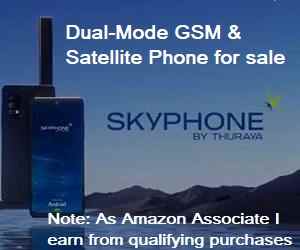Satellite Internet Forum.
Welcome, Guest. Forum rules.To search this site click here > SATSIG search
| Home Login Register |
| Satellite Internet forum › iDirect Forum: hubs and terminals › Frequency hopping |
|
Pages: 1
|
Frequency hopping(Read 13982 times) |
|
xenogears
Member
★★ Offline Posts: 9 |
Dec 14th, 2010 at 6:22pm
|
| Back to top |
IP Logged
|
|
jawadg
Member
★★ Offline Posts: 19 |
Reply #1 - Dec 15th, 2010 at 3:37pm
|
| Back to top |
IP Logged
|
|
xenogears
Member
★★ Offline Posts: 9 |
Reply #2 - Dec 15th, 2010 at 7:17pm
|
| Back to top |
IP Logged
|
|
Eric Johnston
Senior Member
★★★ Offline Posts: 2109 |
Reply #3 - Dec 15th, 2010 at 8:58pm
|
| Back to top |
« Last Edit: Dec 17th, 2010 at 10:57am by Admin1 »
IP Logged
|
|
xenogears
Member
★★ Offline Posts: 9 |
Reply #4 - Dec 16th, 2010 at 11:50pm
|
| Back to top |
IP Logged
|
|
Scout
Senior Member
★★★ Offline Posts: 86 |
Reply #5 - Dec 20th, 2010 at 3:27pm
|
| Back to top |
IP Logged
|
|
xenogears
Member
★★ Offline Posts: 9 |
Reply #6 - Dec 20th, 2010 at 8:41pm
|
| Back to top |
IP Logged
|
|
yazzdan
Member
★★ Offline Posts: 47 |
Reply #7 - Dec 21st, 2010 at 11:25am
|
| Back to top |
Regards,&&Syed Irfan Hasan&&iDirect & VSAT Engineer
IP Logged
|
|
Scout
Senior Member
★★★ Offline Posts: 86 |
Reply #8 - Dec 22nd, 2010 at 8:30pm
|
| Back to top |
IP Logged
|
|
zizo9227
Member
★★ Offline Posts: 19 |
Reply #9 - Jan 24th, 2011 at 7:18am
|
| Back to top |
IP Logged
|
|
Ex Member
Ex Member
★ |
Reply #10 - Jan 25th, 2011 at 8:25am
|
| Back to top |
IP Logged
|
|
Eric Johnston
Senior Member
★★★ Offline Posts: 2109 |
Reply #11 - Jan 25th, 2011 at 10:56am
|
| Back to top |
« Last Edit: Jan 26th, 2011 at 11:16am by Admin1 »
IP Logged
|
|
Scout
Senior Member
★★★ Offline Posts: 86 |
Reply #12 - Jan 31st, 2011 at 3:08pm
|
| Back to top |
IP Logged
|
|
Eric Johnston
Senior Member
★★★ Offline Posts: 2109 |
Reply #13 - Feb 2nd, 2011 at 10:27am
|
| Back to top |
IP Logged
|
|
Ex Member
Ex Member
|
Reply #14 - Jun 17th, 2011 at 1:43pm
|
| Back to top |
IP Logged
|
|
DeanFM
Member
★★ Offline Posts: 36 |
Reply #15 - Jul 12th, 2011 at 8:24am
|
| Back to top |
IP Logged
|
|
Eric Johnston
Senior Member
★★★ Offline Posts: 2109 |
Reply #16 - Jul 12th, 2011 at 9:21am
|
| Back to top |
IP Logged
|
|
Pages: 1
|
Email me: eric@satsig.net
Powered by YaBB 2.5.2!
YaBB Forum Software © 2000-. All Rights Reserved.
Disclaimer, Terms of Use and Privacy Forum User Agreement Forum rules Cookie policy.



